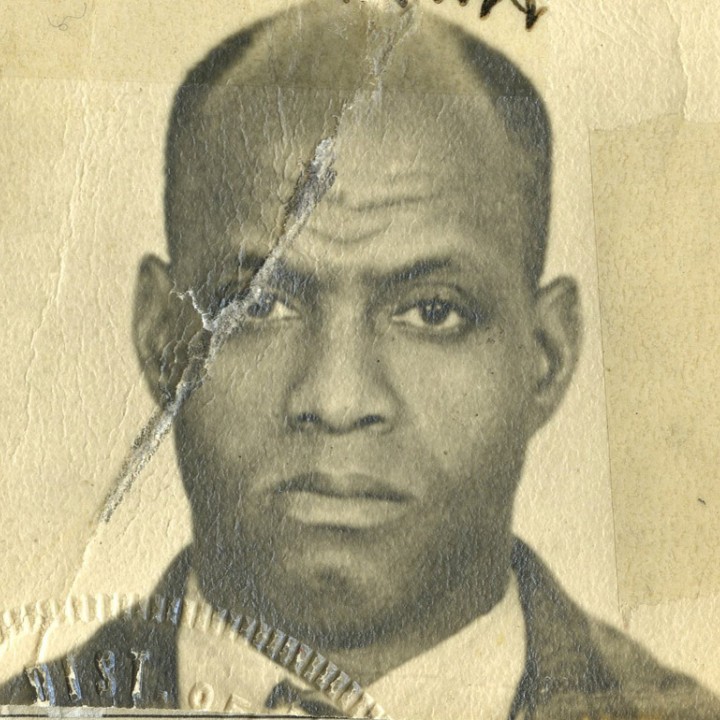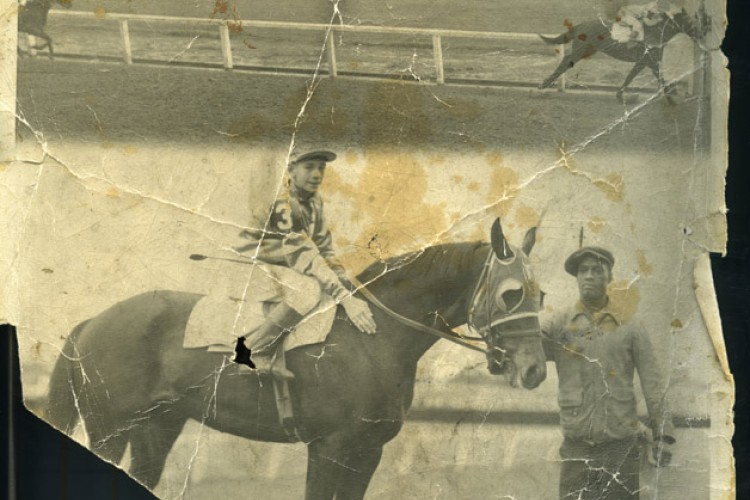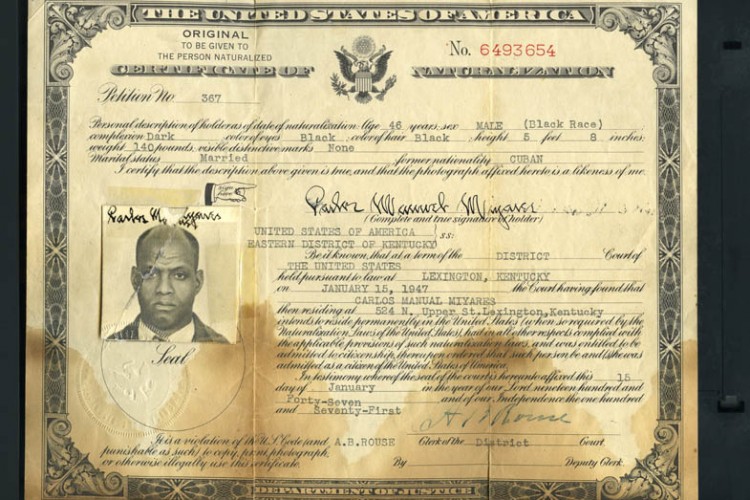
Carlos Miyares
Childhood and Immigration
Carlos “Cuban Charlie” Miyares was born in 1900, in Havana, Cuba. While living in Cuba, he began his career as a horse groom. In 1925, he immigrated to the United States on the ship Governor Cobb. He arrived at the port of Key West, Florida at the age of 23.1
Career in the United States
Miyares’ first job in the United States was at the Latonia Race Track, near Covington, Kentucky. He specialized in plaiting horses’ tails. Plaiting, or braiding, involves precision and risk due to horses’ natural tendencies to kick. His daughter, Severa Miyares Jacobs, explains, “He had a special relationship with the horses that he did that for . . . they stood very still while he completed that job.”2
Miyares traveled around the country following the race seasons in different regions. In the spring, Miyares was at home in Kentucky at Keeneland and Churchill Downs. He also traveled to tracks in Chicago, Illinois and Detroit, Michigan. In the winter, Miyares traveled south to tracks in New Orleans, Louisiana and Hot Springs, Arkansas.
Marriage and Family
While working at the Latonia Race Track in his early career, Miyares ate his meals in the track’s staff kitchen with fellow grooms, trainers, and other racetrack employees. He became friends with the cook, Anthony Vaughn. Vaughn introduced his niece Severa Garner to Miyares and the two fell in love, married, and had three children: Mary Jane, Charles Jr., and Severa. Shortly after becoming a U. S. citizen, Miyares purchased a house in Lexington. The family remained there until 2005.
Cuban Heritage and Citizenship
Miyares immigrated to the United States with the desire to become a citizen. After a long process of studying, Miyares became a naturalized citizen on January 15, 1947. The Lexington Leader published a photo taken of him with three others who naturalized.
He was very proud of this achievement and cherished his hard-earned citizen status. Still, he did not completely leave behind his heritage.
Miyares still spoke with his Cuban accent, which his daughter Severa Jacobs believes resulted in different treatment than other African Americans. She describes that he was treated better at hotels and other venues when people heard him speak and realized he was born abroad.3 According to Jacobs’ account of her father’s experience, in those days, Black people born outside the United States did not face the same racism that African Americans did. Though proud of his Cuban heritage, Miyares identified as African American.
Legacy
Miyares worked as a groom into the 1960s. As he approached retirement, he stopped traveling out of state and worked only at Keeneland and Churchill Downs. He passed away in 1973 at the age of 73, leaving behind a legacy of hard work and dedication. Speaking about her father, Severa Jacobs says “I’m proud of a lot of things. First of all, I’m proud to be his daughter. And, I’m proud that he never gave up on his dreams.”4
Sources
“Certificate of Naturalization.” 1947. 6493654. Eastern District of Kentucky.
“Florida Passenger Lists, 1898-1963.” n.d. Passenger List. Alien Passenger List of Vessels Arriving at Key West, Florida. The National Archives at Washington, D.C: Ancestry.com.
Lexington Leader. 1947. “New United States Citizens,” January 17, 1947.
Severa Jacobs. 2019. Chronicle of African Americans in the Horse Industry Oral History Project. Louie B. Nunn Center for Oral History, University of Kentucky Libraries. https://kentuckyoralhistory.org/ark:/16417/xt791zwszpphw. Listen Online
Citation
When citing this article as a source in Chicago Manual of Style use this format: Last name, first name of Author. Chronicle of African Americans in the Horse Industry. n.d. “Title of Profile or Story.” International Museum of the Horse. Accessed date. URL of page cited.





